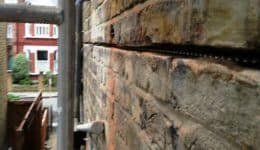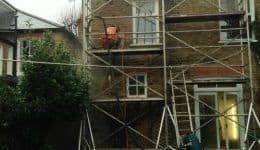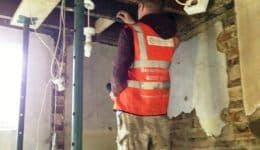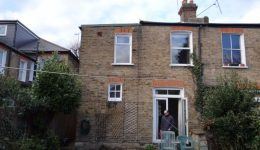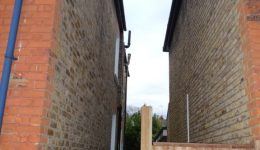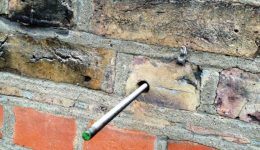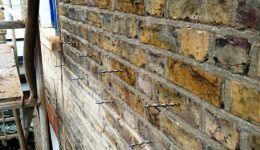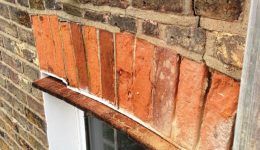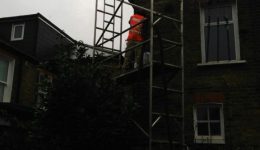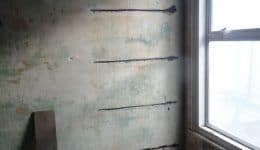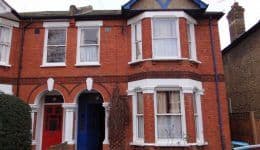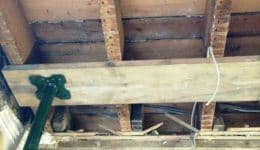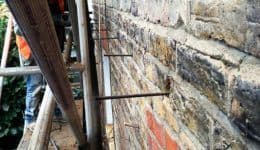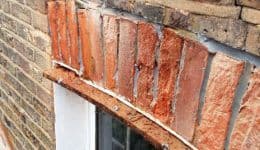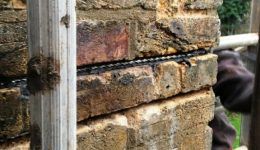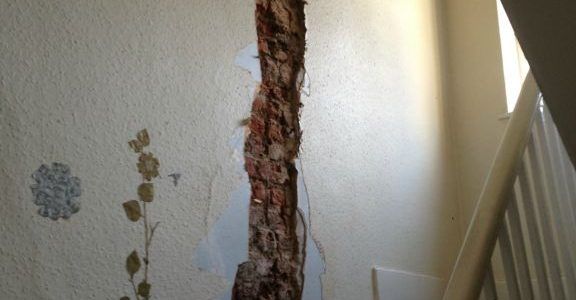
Bowing Walls London
Bowing Walls in London are relatively common structural defect that occurs to Victorian and Edwardian properties which make up much of London’s housing stock.
Newman’s are often faced with this structural issue and have become highly experienced in rectifying this problem using non-disruptive modern methods of reinforcement supplied to us by manufacturer and supplier Twistfix.
Bowing walls and lateral instability usually occurs when the masonry panels, often solid walls, aren’t connected to the floor joists, ceiling joists and stair cases. Without this connection the brickwork can act freely and will move under altering structural loads, ground movement or high winds.
It is essential for the stability of the structure that the building is tied into the brickwork in order to prevent cracking or even collapse of the structure by having this connection. Newman’s can design and implement suitable repair solutions to overcome this problem and provide lasting concealed repairs.
This property in Central London’s Fitrovia, W1, which was once home of the famous writer George Bernard Shaw, was suffering from major lateral instability causing cracking at party wall junctions to the rear elevation of the building.
As often with this type of property the narrow stair cases have many rooms leading off of landings at various levels and the 5 storey 13 inch solid brickwork was completely un-connected leaving bowing walls at floor joist level and outward leaning walls at 4th and 5th floor level.
With the building being a listed structure it was essential that our design included a concealed solution that would provide adequate restraint to the masonry and again the Twistfix range of lateral restraint solutions were key to the repairs schemes success.
In order to tie the rear elevation to the flank elevation bed joint reinforcement was chased into the external rear corner at 450mm centres vertically up the entire height of the building, this was then drilled into the internal skin of brickwork where it was chased into the masonry and grout fixed creating an L shape tie which would resist further outward movement. Once repointed and plastered this permanent connection would be invisible to the eye.
Cracking to junctions of stud walls were apparent and the bowing was more severe at this section which was in the middle of the rear elevation, with the plaster removed on one side of the stud wall we installed additional noggins between the studs to provide extra strength and installed Twistfix lateral restraint ties at every 400mm centres the full height of the building. The ties are installed through the exterior of the brickwork and self-cut into the timber stud work once installed 10% of the ties were load tested achieving a minimum of 3 K/n’s pull out force. The connection is made with rapid set WHO-60 grout and once brick repairs were carried out the connection is invisible to the eye.
As well as lateral restraint ties into the stud walls, ties were required into the landing floors to prevent further bowing. Ties were installed every 400mm’s again and connected in the same manor. This method of repair provides a lasting permanent solution resisting further lateral movement.
Newman’s can help to diagnose structural defects, cracking and movement by arranging a free Structural Survey, contact London and the south East’s leading structural repair specialists for Help, Advice and peace of mind Call 0333 444 0154 or Email info@newmans.com
